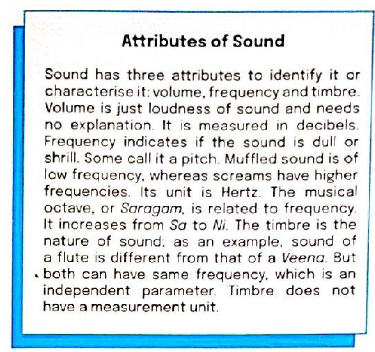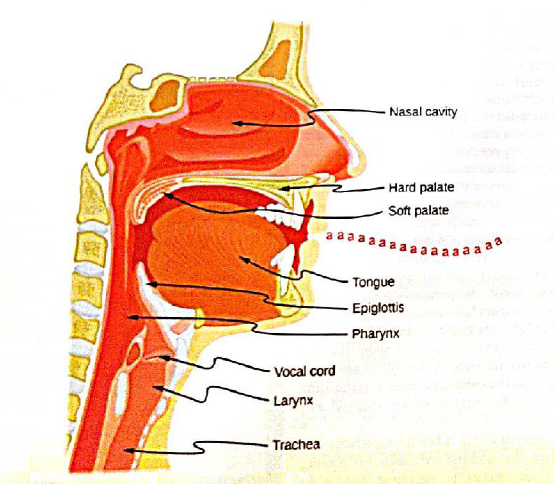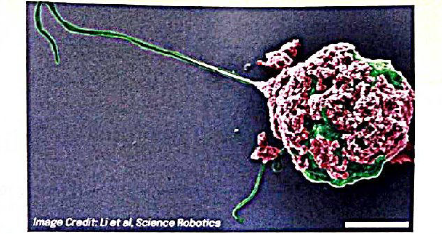SCIENCE REPORTER SUMMARY: AUGUST 2024
ARTICLE 1
Earth Overshoot Day
Warning Signs from Environmentalists
- Since the 1970s, environmentalists have been warning that our relentless pursuit of development cannot go on forever. They cautioned that the time might come when nature would be unable to replenish the resources we are rapidly consuming.
- By the early 1970s, researchers discovered that humanity’s annual resource consumption had already exceeded nature’s ability to regenerate those resources, known as the Earth’s biocapacity, before the year ended.
- Since then, this imbalance has worsened each year, with the anticipated Earth Overshoot Day for 2024 predicted to fall on August 1. This marks the day when humanity has consumed more resources than the Earth can replenish in a year.
Understanding Earth Overshoot Day
- Earth Overshoot Day, formerly known as Ecological Debt Day, is calculated by dividing the world’s biocapacity (the total resources generated by Earth in a year) by humanity’s ecological footprint (our total consumption of Earth’s resources) and multiplying by 365.
- The formula reveals the day when humans have consumed more than what the planet can provide in that calendar year.
- This concept symbolizes when humanity enters an “ecological deficit,” a situation in which our consumption exceeds the Earth’s capacity to regenerate.

Escalating Resource Consumption
- Earth Overshoot Day highlights how our increasing demand for natural resources, driven by population growth, urbanization, industrialization, and lifestyle changes, has moved this deficit day earlier each year.
- In 1970, humanity’s consumption was roughly balanced with what Earth could regenerate, but today, the consumption rate is equivalent to using 1.8 Earths.
- This unsustainable trend, if continued, suggests that by mid-century, we would require the resources of more than two Earths to meet our needs.
Ecological Impact and Biodiversity Loss
- The consequences of this resource imbalance are profound. Rapid deforestation, fresh water shortages, soil erosion, and desertification are all manifestations of this ecological deficit.
- Additionally, increased carbon dioxide levels are driving climate change, further threatening biodiversity. According to the Global Footprint Network, nearly 69% of living species have declined between 1970 and 2023, and approximately two million species are at risk of extinction.
- This loss of biodiversity is not only irreversible but also poses significant risks to human survival and well-being.
Rethinking Economic Priorities
- Economists like Robert and Edward Skidelsky argue that our current economic models, focused on endless growth and GDP expansion, are fueling reckless consumption.
- In their 2012 book “How Much is Enough?”, they advocate for a moral distinction between wants and needs, urging a shift towards a sustainable lifestyle that prioritizes the conservation of Earth’s resources.
- The trend of pushing Earth Overshoot Day earlier each year suggests a need for urgent action to reduce consumption and rethink economic priorities.
Solutions and the Path Forward
- To mitigate the impact of Earth Overshoot Day, lifestyle changes, such as reducing resource consumption, are crucial.
- The disparity between developed and developing countries in terms of resource consumption highlights the need for equitable solutions.
- Developed nations consume resources at rates several times higher than developing nations, and if global consumption were aligned with that of developed countries, Earth Overshoot Day would arrive even earlier.
- Reducing carbon emissions by half could delay the day by nearly three months each year, while implementing sustainable policies around urbanization and industrialization could help reverse the current trend and protect the environment and biodiversity.
ARTICLE 2
Indian space start-up flies first single-piece 3D printed engine rocket

Historic Launch by AgniKul Cosmos
- AgniKul Cosmos, an IT Madras-incubated space startup, successfully launched the world’s first single-piece 3D-printed semi-cryogenic engine rocket, Agnibaan-SOrTeD, on May 30, 2024.
- The rocket took off from the startup’s launch pad, Dhanush, located at the Satish Dhawan Space Centre in Sriharikota, achieving a suborbital altitude of 8 km before splashing down in the Bay of Bengal.
- AgniKul announced on social media that all mission objectives were met, marking a significant milestone in India’s space sector.
- This success makes AgniKul the second private company in India to accomplish a rocket launch, following Skyroot Aerospace’s Vikram-S launch in November 2022.
Agnibaan-SOrTeD: A New Era in Space Technology
- The Agnibaan-SOrTeD rocket is designed to carry payloads ranging from 3 kg to 300 kg into a 300-km orbit. Although this was the fifth attempt since the first scheduled launch in March 2024, technical issues delayed previous efforts.
- The Chairman of IN-SPACe, Pawan Goenka, hailed the successful launch as a historic moment, while the Indian Space Association (ISpA) stated that it would boost global confidence in India’s private space industry.
3D Printing’s Role in Space Innovation
- 3D printing has revolutionized the global space sector, and India has embraced this technology. The Indian Space Research Organisation (ISRO) recently tested 3D-printed engines for its PSLV rockets, significantly reducing the number of engine parts and cutting production time by 60%.
- This technology has not only enhanced efficiency but also reduced raw material usage. AgniKul’s innovative approach is exemplified by its rocket engine, Agnilet, which stands out for being a semi-cryogenic engine.
The Significance of the Agnilet Semi-Cryogenic Engine
- The Agnilet engine, used in Agnibaan-SOrTeD, represents a major advancement in space technology. Unlike traditional cryogenic engines that require large tanks to store liquid hydrogen and oxygen at extremely low temperatures, the semi-cryogenic engine uses refined kerosene, allowing for normal temperature storage and reduced space requirements. This design results in greater payload capacity and increased thrust. The use of 3D printing in manufacturing Agnilet engines allows AgniKul to produce rockets much faster—75 hours compared to the standard 10-12 weeks required by conventional methods.
A New Milestone for AgniKul and India’s Space Sector
- AgniKul’s successful launch of Agnibaan showcases its ability to develop innovative, reliable, and cost-effective solutions for the space industry. By leveraging cutting-edge 3D printing technology, the company has demonstrated the potential to revolutionize rocket manufacturing, offering faster and more efficient production timelines.
- This achievement represents a significant step forward for both AgniKul and India’s private space sector, positioning the country as a key player in global space exploration.
ARTICLE 3
Seven Swaras and the Quantisation

The Concept of Quantisation in Physics and Music
- The word “quantisation” is derived from the noun “quantum,” meaning a specific quantity or amount. In physics, it refers to dividing entities into discrete packets or units, as first proposed by Max Planck in the context of energy.
- Niels Bohr extended this concept, suggesting that electrons orbit the nucleus in fixed, discrete orbits based on energy levels. Similarly, in music, the process of quantisation involves grouping audio frequencies into distinct notes, such as the seven swaras in Indian classical music.
- This segmentation mirrors the discrete orbits in atomic theory and helps create structured, pleasing sound arrangements.
The Structure of Music and Early Origins
- Music, defined as the systematic arrangement of sounds set in rhythm, has ancient roots. Primitive man likely found inspiration from natural sounds, and over time, musical instruments like drums and stringed devices emerged.
- In India, the foundational work on music can be traced back to Bharat Muni’s Natyashastra, written 2000 to 2500 years ago. It introduced the seven swaras—Sa, Re, Ga, Ma, Pa, Dha, and Ni.
- Interestingly, Western classical music has the same seven-note structure (Do, Re, Mi, Fa, Sol, La, Ti). These notes follow a specific frequency progression, doubling in frequency for each octave, creating a mathematical harmony.

Quantisation in Music Frequencies

- Quantisation in music refers to selecting distinct frequencies from a continuous range, similar to how Bohr’s atomic model works. When a musician plays an instrument, such as a violin, continuous frequency changes occur as they move the bow along the string.
- However, musical compositions are built on discrete frequencies corresponding to the seven swaras or musical notes.
- The notes are arranged according to specific frequency ratios, such as 4:5:6 for Sa, Ga, and Pa, making the music sound aesthetically pleasing. This method of organizing sound ensures that each note has a distinct frequency, much like discrete orbits in physics.
The Role of the Human Voice in Quantisation

- The human voice plays a significant role in the quantisation of musical notes. The larynx, or voice box, contains vocal cords that produce sound by vibrating at different frequencies.
- Men, women, and children have varying vocal cord lengths, leading to differences in pitch. The muscles around the vocal cords help modulate sound, creating distinct consonant and vowel sounds.
- This natural ability to produce specific frequencies with minimal effort has influenced the creation of musical scales, leading to the discrete arrangement of notes like Sa, Re, and Ga.


Why Quantisation is Necessary in Music
- Quantisation in music arises from the limitations of the human voice and the need for precise control over sound. While instruments like stringed devices can produce continuous frequencies, the human voice finds it challenging to modulate frequencies in small increments, such as going from 250 Hz to 251 Hz.
- Instead, it can more easily produce distinct frequencies, like 256 Hz and 288 Hz. This inherent limitation of the vocal cords led to the selection of specific, discrete frequencies in music, forming the basis for the quantisation of musical notes.
Universal Nature of Musical Quantisation
- The concept of quantisation in music is not unique to Indian classical traditions; it is also present in Western music and other cultures. This suggests that the quantisation of sound may stem from the anatomy of the human voice rather than mathematical or aesthetic considerations alone.
- The ability of different civilizations to independently identify the same seven-note structure reinforces the idea that quantisation arises naturally from how humans produce sound.
The Flexibility of Musical Rules
- While quantisation is a core principle in music, exceptions exist. Musicians sometimes use techniques like moorki or meend to glide between frequencies, creating a continuous flow of sound.
- These ornamental variations deviate from the rigid structure of quantised notes, showcasing the flexibility and creativity within musical expression. Nonetheless, quantisation remains the foundation upon which most musical compositions are built, ensuring harmony and coherence.
ARTICLE 4
The Centennial of a Quantum Leap

The Revolutionary Letter to Einstein: A Pivotal Moment
- On June 4, 1924, Satyendra Nath Bose, a young professor from Bengal, sent a letter to Albert Einstein that would forever change the field of quantum mechanics.
- Though Bose was unsure if Einstein would even read his letter, the physicist not only read it but also translated and published it, recognizing its profound implications.
- This moment marked the birth of “Bose statistics” and paved the way for major breakthroughs, including the discovery of bosons and the development of Bose-Einstein condensation.
- As we mark the centenary of this monumental event, it is crucial to reflect on how Bose’s work reshaped modern physics, influencing areas like superconductivity and superfluidity.
The Birth of Bose Statistics
- Bose’s groundbreaking journey began when he sought to teach Planck’s theory of black-body radiation to his students at Dacca University. He realized that Planck’s law did not align with classical statistical mechanics and identified a flaw in the way particles were counted.
- He proposed that photons, the particles of light, should be treated as indistinguishable, leading to a new statistical approach—Bose statistics.
- His theory offered a more accurate explanation of black-body radiation. Although initially rejected by journals in London, Bose sent his work directly to Einstein, who recognized its significance.
Einstein’s Endorsement and Bose-Einstein Statistics
- Einstein’s response to Bose was transformative. He not only published Bose’s paper but also extended the theory to atoms, predicting the existence of a new state of matter known as the Bose-Einstein Condensate (BEC).
- Bose statistics became a fundamental part of quantum mechanics, describing how particles like photons and later-discovered particles such as gluons and the Higgs boson behave.
- These particles, now called bosons in Bose’s honor, follow the Bose-Einstein distribution instead of classical statistics, laying the groundwork for further quantum discoveries.
Bose-Einstein Condensation: A New State of Matter
- Einstein’s extension of Bose’s ideas led to the prediction of Bose-Einstein Condensation, where bosons occupy the lowest quantum state at temperatures near absolute zero, acting as a single quantum entity.
- Though it remained theoretical for decades, BEC was finally observed in 1995 by Eric Cornell and Carl Wieman, and separately by Wolfgang Ketterle.
- The successful creation of BEC opened new research avenues in quantum mechanics, demonstrating quantum behavior on a macroscopic scale.
Superfluidity and Superconductivity: Practical Implications
- The discovery of BEC had significant implications for fields like superfluidity and superconductivity. Superfluidity, observed in liquid helium, is when a fluid flows without viscosity, a phenomenon explained by Bose-Einstein statistics.
- Similarly, superconductivity, the ability of certain materials to conduct electricity without resistance, was also linked to Bose’s work. The BCS theory, developed in 1957, showed that electron pairs in superconductors behave like bosons, allowing them to condense and cause superconductivity.
Bose-Einstein Statistics and Their Legacy
- Bose-Einstein statistics have far-reaching applications, influencing quantum mechanics, condensed matter physics, and even technological advancements.
- In quantum computing, bosons are integral to quantum communication, cryptography, and the creation of qubits, which can exponentially increase computational speed. In particle physics, the discovery of the Higgs boson in 2012 confirmed Bose’s contributions, as the particle follows Bose-Einstein statistics.
- Additionally, Bose’s ideas continue to influence condensed matter physics, particularly in understanding exotic states of matter and quantum fluids.
Honoring Satyendra Nath Bose: A Century of Legacy
- As we celebrate 100 years of Bose-Einstein statistics, it is essential to reflect on Bose’s groundbreaking contributions. Bose’s statistical framework revolutionized quantum mechanics and statistical physics, but his work did not receive the recognition it deserved during his lifetime.
- Despite being instrumental in reshaping modern physics, Bose never won a Nobel Prize, an oversight that remains controversial to this day.
- His discoveries, however, have had an enduring impact on fields as diverse as quantum theory and modern technology.
A Call for Recognition
- The centenary of Bose-Einstein statistics provides an opportunity to properly honor Satyendra Nath Bose’s contributions.
- His work laid the foundation for many technological and scientific advancements, and it is time to give his achievements the recognition they deserve, both in academic circles and in public memory, not only in India but around the world.
ARTICLE 5
Feynman Point and more about Pi
Pi and its Importance in Calculations
- The value of Pi (π) plays a crucial role in many calculations, particularly those involving circles. When students are asked to calculate the area and circumference of a circle, the precision of their answers depends on the number of decimal places they use for Pi.
- For instance, while one student might use Pi as 3.14, another might use a more precise value like 3.14159. As the number of digits after the decimal increases, so does the accuracy of the results.
- This difference can seem significant in some cases, but how many digits are really needed for practical calculations?
Memorization and the Feynman Point

- In the past, students were often encouraged to memorize many digits of Pi. Some even managed to recall hundreds or thousands of digits. One interesting point within Pi’s long sequence of digits is the “Feynman Point,” named after Nobel laureate Richard Feynman.
- Feynman noted that at the 762nd decimal place, six consecutive 9s appear. He humorously suggested that if someone could recite Pi up to that point, they could pretend that Pi ended there, implying it might be a rational number.
- The Feynman Point, however, does not mark the end of Pi; its digits continue infinitely without a predictable pattern.

Pi Day and Cultural Significance
- Pi has also become a cultural symbol, celebrated on “Pi Day” every March 14 (3/14) in reference to the first three digits of Pi. Additionally, it coincides with Albert Einstein’s birthday, adding a layer of scientific significance.
- While Pi memorization still captivates some, competitions and world records, like that set by Rajveer Meena who recited 70,000 digits of Pi, keep the tradition alive.
How Many Decimal Places are Necessary?
- Despite the fascination with Pi’s infinite digits, for practical purposes, very few are needed. For example, using Pi to just three decimal places (3.142) yields a result that differs from using 10 decimal places by less than 0.01% for both area and circumference calculations of a 100 cm radius circle.
- Even NASA’s Jet Propulsion Laboratory (JPL) uses only 15 decimal places of Pi for its most precise interplanetary navigation tasks.
NASA’s Examples of Precision
- NASA provides illustrative examples to show how Pi’s precision impacts calculations. One involves Voyager 1, the most distant spacecraft from Earth, which is over 23.6 billion km away.
- If the value of Pi were extended beyond 15 decimal places, the difference in calculating a circle’s circumference with a radius that large would be just 1 cm over 150 billion km—an insignificant deviation for NASA.
- Another example shows that circumnavigating Earth at 12 km above the equator would only change by a molecular distance if Pi were extended beyond 15 decimal places.
Conclusion: Precision and Practicality
- While Pi has an infinite number of digits, only 15 decimal places are necessary for even the most precise scientific calculations. Beyond that, the differences become negligible.
- The Feynman Point remains an interesting curiosity, but it underscores the point that for all practical purposes, Pi’s endless digits are more of a mathematical wonder than a necessity.
ARTICLE 6
THE SCIENCE BEHIND YAK MILK
Introduction to Yaks

- Yaks (Bos grunniens) are long-haired bovines from the Bovidae family, native to the high-altitude regions of the Himalayas, primarily found between 3,000 to 5,400 meters.
- They inhabit countries like China, Mongolia, Uzbekistan, Tajikistan, Siberia, Bhutan, Tibet, India, and Nepal. In India, yaks are found in regions like Arunachal Pradesh, Ladakh, Sikkim, and Himachal Pradesh.
- They are semi-domesticated, herbivorous, and play a vital role in the local economy by providing meat, hides, milk, hair, and even fuel. According to a 2019 census, India has over 58,000 yaks, a 25% decline since 2012.
Yak Milk Production and Composition
- Yak milk is highly nutritious and serves as a primary source of vitamins and minerals for Himalayan inhabitants. Yaks typically produce milk after calving, with a lactation period yielding between 150-500 kg of milk depending on factors such as age, breed, and environmental conditions.
- Compared to cow milk, yak milk has a richer composition of minerals, polyunsaturated fatty acids (PUFAs), and solids like proteins and lactose. It is a healthier option for those who are lactose intolerant due to its lower lactose and fat content and higher protein levels.
- The milk is produced seasonally, with maximum production occurring during the summer and autumn months.
Chemical Properties of Yak Milk
- Yak milk is rich in essential nutrients like fatty acids, proteins, and amino acids. The most abundant fatty acids in yak milk are monounsaturated and polyunsaturated fats, which contribute to a lower risk of cardiovascular diseases.
- Yak milk also has higher levels of casein proteins (80% of total proteins), which are vital for its unique flavor and texture. Additionally, the milk contains beneficial enzymes that aid in digestion and have antioxidant properties.
- Yak milk is also a source of essential amino acids like glutamic acid and methionine, providing a high amino acid score compared to cow milk.
Microelements and Vitamins in Yak Milk

- Yak milk is densely packed with microelements like calcium, iron, copper, and zinc, which contribute to its high nutritional value. It also contains significant amounts of vitamins A, D, and B12, making it a strong antioxidant-rich food source.
- The high vitamin E content in yak milk helps reduce oxidative stress, a common issue in high-altitude environments.
- These nutrients are critical to the overall health of the local population, compensating for the lack of vegetable consumption due to the challenging living conditions.
Yak Milk Products

- Yak milk is used to produce various products, including butter, cheese, and yoghurt. These products are nutrient-rich and offer health benefits due to the milk’s high content of polyunsaturated fats and probiotics.
- Yak cheese, in particular, comes in multiple varieties such as churpi (a soft and hard cheese), and is recognized as a Geographical Indication (GI) product in Arunachal Pradesh, India.
- Yak butter and cheese are widely consumed, while other traditional products include fermented milk, milk tea, and cake.
Commercialization and Technological Advancements
- In recent years, there has been a growing interest in yak milk due to its health benefits and potential as a functional food source.
- The Indian Council of Agricultural Research (ICAR)-National Research Centre on Yak has established a yak milk parlour in Nyukmadung, Arunachal Pradesh, producing various yak milk products.
- These efforts aim to support the commercialization of yak milk, benefiting the local yak herders economically while promoting the nutritional advantages of yak milk and its products.
ARTICLE 9
Aurora – A Celestial Majesty


The Fascination of the Aurora
- Thousands of years ago, a group of people in what would later be Norway witnessed a captivating sight: the sky lit up in vibrant shades of green, pink, yellow, red, and purple.
- This phenomenon, now known as the aurora, has intrigued people throughout history. The exact moment when the first aurora occurred is unknown, but it has since gained a scientific explanation.
- The aurora continues to spark the curiosity of people around the world, as it presents a beautiful natural light display in the Earth’s sky.
Aurora and Auroral Oval
- Auroras are natural light displays that occur predominantly in high-latitude regions, such as the Arctic and Antarctic. These lights appear as dynamic patterns of brilliant colors that often resemble curtains, spirals, or rays across the night sky.
- The occurrences of auroras are concentrated around the Earth’s poles, creating a large oval-shaped region called the “auroral oval.”
- In the northern hemisphere, auroras are visible in places like Iceland, Canada, and Russia, while the southern auroras can be seen in regions like Tasmania, Antarctica, and New Zealand.
Northern and Southern Lights

- Auroras are classified into two types based on their location. The aurora seen in the Arctic Circle is called the Aurora Borealis or Northern Lights, while the aurora visible in the Antarctic Circle is known as the Aurora Australis or Southern Lights.
- The term “Aurora Borealis” was first coined by Galileo in 1619. Both types of auroras result from the same underlying scientific processes, but they are observed in different regions of the globe.
The Science Behind the Aurora
- Auroras are caused by the interaction between charged particles from the sun and Earth’s atmosphere. The sun emits solar wind, composed of particles like electrons and protons, which can travel toward Earth.
- Most of these particles are deflected by Earth’s magnetic field, but some reach the polar regions and collide with oxygen and nitrogen atoms in the atmosphere.
- These collisions excite the atoms, causing them to emit light. The result is the colorful display known as the aurora, visible at altitudes between 100 km and 300 km above the Earth’s surface.
Auroral Colors and Variations
- The colors of the aurora depend on several factors, including the energy of the solar particles, the types of atmospheric atoms involved, and the altitude of the collisions.
- High-energy collisions with oxygen at altitudes above 290 km produce red auroras, while lower-energy interactions at lower altitudes result in green auroras.
- Collisions with nitrogen atoms create blue or red hues. Other colors, such as purple and pink, may appear when different interactions combine.
Aurora on Other Planets
- Auroras are not exclusive to Earth. Scientists have observed similar displays on planets like Saturn, Jupiter, Neptune, and Uranus, where the solar wind interacts with the planets’ magnetic fields.
- On Venus and Mars, auroras occur through direct interaction between the solar wind and the planets’ atmospheres.
- The colors of auroras on other planets vary depending on the gases present in their atmospheres, providing fascinating insight into planetary science.
Auroral Tourism
- The beauty of auroras has drawn travelers from around the world for thousands of years. As a result, aurora tourism has become a global industry, with countries near the Arctic Circle, such as Norway, Finland, Sweden, and Iceland, becoming prime destinations for “aurora chasing.”
- In Norway, for example, 32% of foreign tourists in 2019 were aurora enthusiasts. This growing interest in auroras has contributed to significant economic growth in the tourism sectors of Arctic countries.
Aurora in India
- While auroras are typically visible in polar regions, on rare occasions, strong geomagnetic storms allow them to be seen at lower latitudes. In May 2024, researchers in Ladakh, India, captured auroral activity at astronomical observatories, showcasing a rare sight for the region.
- This event was caused by a strong solar flare, demonstrating how solar storms can extend auroras beyond their typical zones.
Solar Storms and Their Effects
- Auroras are closely linked to solar storms, which occur when large masses of ionized gases are ejected from the sun through sunspots. These solar winds interact with Earth’s magnetic field, causing geomagnetic storms.
- While auroras are a beautiful result of this interaction, solar storms can also disrupt satellite signals, damage power grids, and pose other threats to modern technology.
- As solar activity increases, so does the frequency of auroras and the risks associated with geomagnetic disturbances.
ARTICLE 10
Aquaculture: Commitment to Health, Wealth & Cleaner Environment
- Aquaculture in India plays a crucial role in providing high-nutrition food and supporting rural livelihoods. The practice includes a range of systems, such as earthen ponds, tanks, cages, and integrated aquaculture.
- However, the industry’s growth brings challenges, such as ensuring the safety of aquaculture products and maintaining sustainable practices. Improper techniques, like overstocking and excessive use of fertilizers, can compromise water quality, which is critical to the production of healthy fish.
Nutritional Value of Fish

- Fish is known for its exceptional nutritional benefits, including high-quality protein and essential long-chain omega-3 fatty acids like EPA and DHA, which are important for human health.
- Certain species, like small indigenous fish, contain valuable micronutrients. Aquaculture offers an opportunity to tailor the quality of fish by applying nutrition-smart feeding strategies.
- Improving feed management and quality assurance can ensure that fish remain a rich source of nutrients, benefiting both producers and consumers.
Value-Added Fish Products
- India’s aquaculture sector is expanding beyond basic fish farming into value-added products. For instance, ICAR-CIFA has developed an improved variety of rohu, a fast-growing, disease-resistant fish.
- Additionally, waste products like fish intestines and prawn shells are now being repurposed for pharmaceutical uses, such as the production of chitin and chitosan.
- Preserving fish eggs and excess seasonal catches through drying and packing has also proven to be an effective way to reduce waste and provide nourishment year-round.
Training and Livelihood Opportunities
- Institutions like ICAR-CIFA and the Vivekananda Institute of Biotechnology offer training programs on value addition in fisheries, helping rural youth explore sustainable livelihood options.
- These initiatives support the growth of the aquaculture sector, providing hands-on knowledge about improving fish product quality, reducing waste, and adopting better management practices.
Economic and Ecological Significance
- Aquaculture not only improves economic returns for farmers but also contributes to environmental sustainability.
- By introducing species like grass carp to control weeds and insectivorous fish to manage pests, aquaculture reduces the need for harmful chemicals.
- Additionally, fish scales and other non-edible by-products can be repurposed for animal feed, promoting a cleaner environment.
Aquaculture and Human Health
- Aquaculture’s impact extends beyond food production, as it supports livelihoods across the supply chain, from seed production to fish marketing. The sector has the potential to improve human health by providing safe, nutritious aquatic food.
- There is also scope for community-based “social aquaculture,” akin to social forestry, to conserve indigenous fish species while enhancing human nutrition, especially in rural areas.
- This holistic approach emphasizes the importance of aquaculture for both economic and health benefits.
ARTICLE 11
Vanishing Natural Orchids of West Bengal
The Unique Beauty and Importance of Tropical Orchids in West Bengal
- West Bengal is home to naturally grown wild tropical orchids, known for their vibrant colors, intricate shapes, and medicinal properties.
- These orchids, predominantly epiphytic in nature, thrive in various regions such as the hill forests of Purulia and Bankura districts, as well as along riverbanks and old orchards in Malda and Murshidabad.
- Epiphytic orchids depend on host plants like mango and neem trees for physical support, drawing nutrients from the surrounding air. These orchids contribute significantly to plant diversity and are integral to the forest ecosystem, where they help in pollination by attracting insects like bees and butterflies.

Ecological and Aesthetic Value of Orchids
- Tropical epiphytic orchids not only enhance the ecosystem but also serve as natural air purifiers, as they cannot grow in polluted environments.
- Some species, like Rhynchostylis renusa and Cymbidium aloifolium, are prized for their striking beauty and are used in floral crafts, ornaments, and indoor decorations.
- The orchids’ ability to grow in eco-friendly ways makes them ideal candidates for conservation efforts and commercial propagation, offering potential for large-scale multiplication without harming the environment.
Threats to Orchid Survival
- Despite their ecological and aesthetic value, the natural populations of orchids in West Bengal are facing severe threats due to human activities.
- The destruction of host plants for road construction, irrigation, and residential projects is leading to the rapid decline of orchid populations.
- As forests and old mango orchards are cleared, the orchids are losing their natural habitat, putting them at risk of extinction.
Conservation Efforts Needed
- The alarming rate at which wild orchids are disappearing in West Bengal calls for immediate conservation efforts.
- The establishment of orchid conservatories in their natural habitats is essential to preserve this unique natural wealth and restore ecological balance.
- Without prompt action, the rich diversity of orchids in the region could be lost forever.
ARTICLE 12
Limulus: The Horse Shoe Crab
The Horseshoe Crab: A Living Fossil
- Limulus, commonly known as the horseshoe crab or king crab, belongs to the class Arachnida and order Xiphosura. Despite its name, the horseshoe crab is not a true crab but a marine arthropod.
- Known as a “living fossil,” the horseshoe crab has remained unchanged for millions of years. Its hard exoskeleton, resembling a horse’s hoof, is the source of its name.
- The species Limulus polyphemus, or the American horseshoe crab, is primarily found along the Atlantic coast and the Gulf of Mexico.
Ecological and Biomedical Importance
- Horseshoe crabs play a crucial role in coastal ecosystems. Their eggs are a primary food source for shorebirds, while young and adult crabs are consumed by sea turtles.
- In some regions, they are eaten by humans, but the primary value lies in their blue blood, which is highly sought after for its biomedical applications, fetching as much as $60,000 per gallon.
- Their blood contains copper-based hemocyanin and amoebocytes, which make the crabs highly resistant to infections by detecting toxins from bacteria.
The Use of Horseshoe Crab Blood in Medicine
- A protein in horseshoe crab blood, Limulus Amebocyte Lysate (LAL), is vital for detecting bacterial endotoxins in medical equipment and injectable drugs.
- The LAL test is widely used in the biomedical industry for ensuring the sterility of medical products and drugs. It can detect endotoxins, which are harmful contaminants produced by Gram-negative bacteria.
- The test involves mixing the LAL reagent with samples, and a positive result occurs when a clot forms or a color change is observed, indicating the presence of endotoxins.
Ethical Concerns and Conservation
- The widespread use of horseshoe crabs in biomedicine has raised ethical concerns. Although the crabs are bled and returned to the ocean, about 30% die after the process.
- The survivors often suffer from reduced vitality, which affects their ability to reproduce. This has led to worries about the long-term sustainability of horseshoe crab populations.
- Further research on these creatures has also contributed to advances in understanding human vision, thanks to their unique compound eyes.
NEWS IN BRIEF
1) A sustainable way to purify arsenic from water

- Researchers at the Centre for Sustainable Technologies (CST) and the Indian Institute of Science (IISc) have developed a new process to remove heavy metal contaminants like arsenic from groundwater.
- Traditional methods, which dispose of untreated heavy metal-rich sludge in landfills, are unsustainable and contribute to groundwater pollution.
- The IISc team’s process involves three steps: first, passing contaminated water through a biodegradable chitosan-based adsorbent; second, using an alkaline wash solution; and third, applying bioremediation to treat the water effectively and sustainably.
2) Low-cost and simple way to capture carbon directly from the air

● Researchers from the University of Cambridge have developed a new, cost-effective, and simple method to capture carbon dioxide (CO2) from the atmosphere, akin to charging a battery.
● They used a battery-like process to charge activated charcoal, which is treated with hydroxide ions to capture CO2. The charcoal, acting like a battery electrode, accumulates hydroxides in its pores. Afterward, the charcoal is removed, washed, and dried for reuse.
● This inexpensive technique offers a more energy-efficient approach to direct carbon capture. The findings were published in the journal Nature.
3) Animal brain inspired drone — a breakthrough in Al

- Researchers from Delft University of Technology in the Netherlands have developed a small, autonomous drone that mimics the way animal brains process information, using neuromorphic image processing.
- This approach enables the drone to use less data and energy compared to traditional deep neural networks running on GPUs. As a result, the drone becomes lightweight, requiring smaller batteries and less hardware.
- It processes data up to 64 times faster and uses three times less energy than GPU-based systems, making it ideal for use in narrow environments. The research was published in Science Robotics.
4) Robotics Pills treat inflammatory bowel disease in mice

- Researchers from the University of California, San Diego have developed a microbe-packed pill designed to treat Inflammatory Bowel Disease (IBD).
- The pill contains microrobots within a liquid capsule, coated with a pH-responsive material that releases them in the colon to target and treat the damaged area.
- Although the experiments were conducted on mice, the approach shows promise for further development. The nanoparticles used are made from biocompatible materials, ensuring safety. The study was published in Science.



